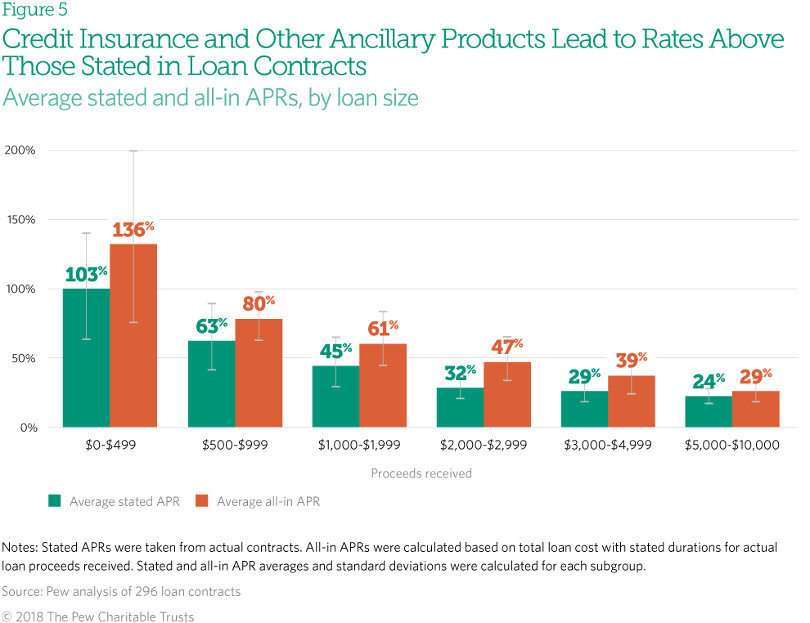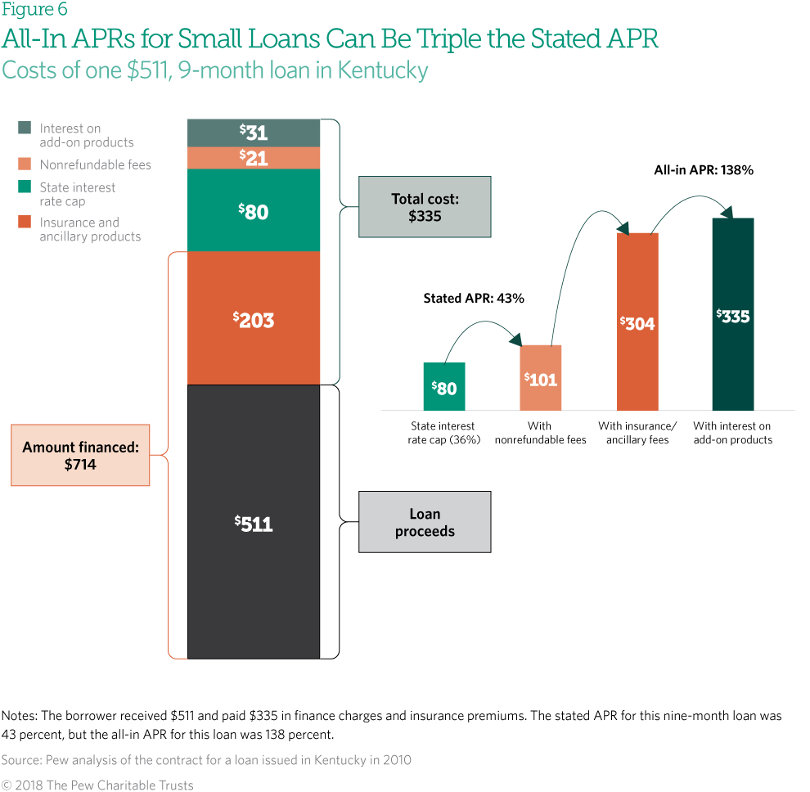Payday loans and title loans are routinely criticized for their steep interest rates. They are often flagged as the worst consumer loans on the market. Payday loans must be repaid in thirty days or a month. Most title loans must be repaid within a similar timeframe.

Immediate one-time repayment with exorbitant accrued interest can make title loans and payday loans extremely risky. However, shocking new research has recently shown that these two much-derided loan products are actually not that much riskier than conventional installment loans.
Installment Loan Risks are Just as High as Payday Loans and Title Loans
According to Titlelo.com, installment loans are simply subprime loans that allow applicants to borrow a set amount of money and pay it back over a mutually-agreed-upon amount of time. However, the bottom line is that installment loans are just as risky as title loans and payday loans. A new research study done by Pew Charitable Trust explores the various aspects of installment loans and infers that they are not safer than high-cost title loans.
Pew finds that state laws are either inadequate or not comprehensive enough to tackle the different ways that installment lenders tend to exploit borrowers. There is more to traditional lending than meets the eye.
For this reason, it is unfair to flag title loans for steep interests and shorter repayment terms when conventional installment loans have similar risks and often compel a borrower to get into a cycle of bad debt.
Millions of Americans use their credit cards for immediate purchases and emergencies. They rely on credit unions or banks for short-term loans. These consumer loan products are all deemed to be safe because they are more stringently regulated than title loans and payday loans. However, for installment loans, regulation is non-existent.
A summary of the research done by Pew:
- The study was conducted over a database of around ten million Americans who borrow anywhere from a hundred to over ten thousand dollars as installment loans in a calendar year.
- These borrowers spent over ten billion in fees and accrued interest.
- While installment loans offer a bit more room to repay, various costs add to the financial burden of the borrower.
- Inadequate state regulations and poor scrutiny have allowed providers of installment loans to levy upfront charges.
- Many companies do not reveal the actual cost of taking out a loan.
- Hence, installment loan borrowing is costlier than it appears if the total debt is not written out.
- Lenders routinely charge acquisition fees. The annual percentage rate is not the only financial obligation of the borrower apart from the loan amount.
- Installment loans often add on ancillary products such as credit insurance.

How Installment Loan Structures Hurt Borrowers
When a borrower takes out an installment loan, most of the principal is moved to the back of the loan. This structure, known as front-loading, allows the principal to remain unpaid and interest to continue to accrue on the larger amount.
Borrowers will have trouble repaying the loan because it ends up being more costly than they think at the outset. Many borrowers end up refinancing their loans, and the same cycle is repeated.
To investigate this a little closer, every time a borrower refinances an installment loan, there are upfront charges like credit insurance (mentioned above), and the first set of repayments never even touch the principal.
So, it is not without reason or just out of sheer financial mismanagement that millions of borrowers end up getting into more debt than they can afford. No, far from it.
These borrowers are not able to see how the loan’s structure is designed to make them fall deeper into debt.
With all said, it is easy to see the similarities between title loans and installment loans. In fact, it wouldn’t take a doctorate in finance to see that both loans are one in the same. Installment loans are simply repackaged high-interest loans that are flying under the radar as states across the country act against title and payday loans. Don’t believe me?
Here is an easy way to compare these loan products below.
| Installment Loans | Title Loans and/or Payday Loans | |
| Credit insurance needed? | Yes | Sometimes |
| Principal moved to the end of the loan? | Yes | No |
| Acquisition fees | Yes | No |
| Pre-payment penalties? | Yes | Yes |
| Exorbitant interest rates? | Yes | Yes |
Conclusion

Of course, it is considerably easier to manage a financial obligation when all the facts are disclosed, and no concealed charges are levied.
Pew’s recent research clearly demonstrates that the practices of the traditional lending industry, be it banks or retail lenders, have not been the noblest or even reasonably transparent.







